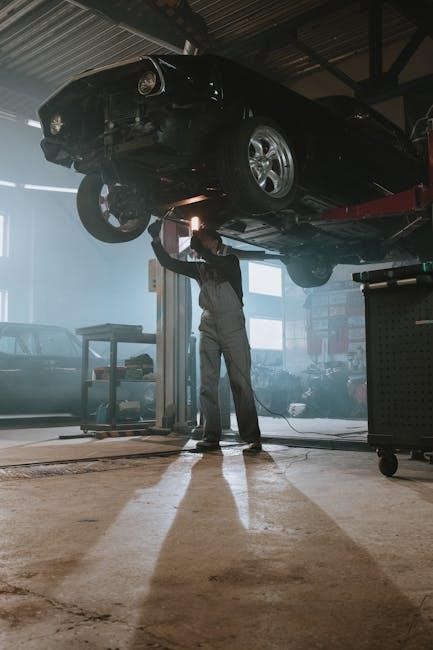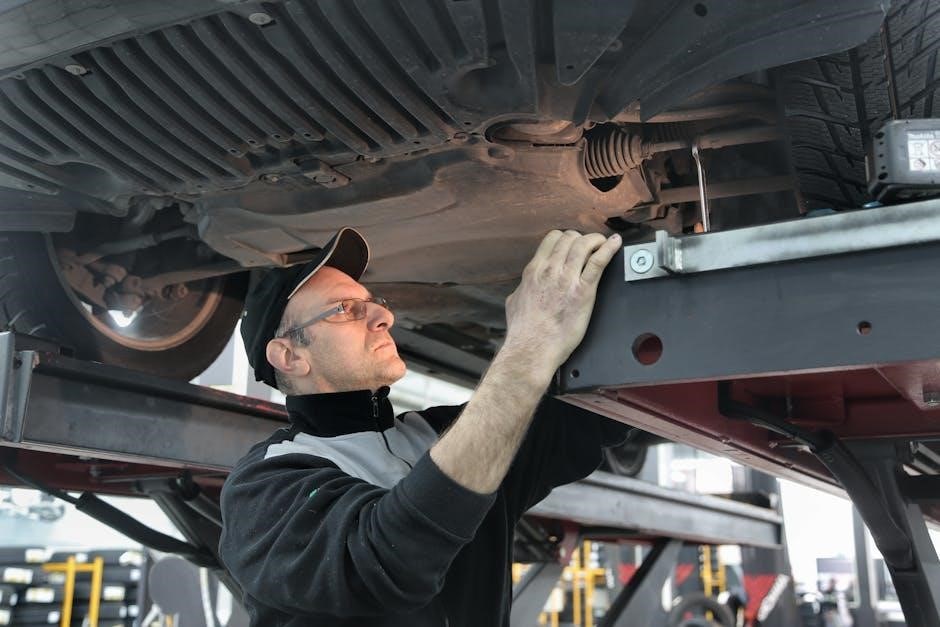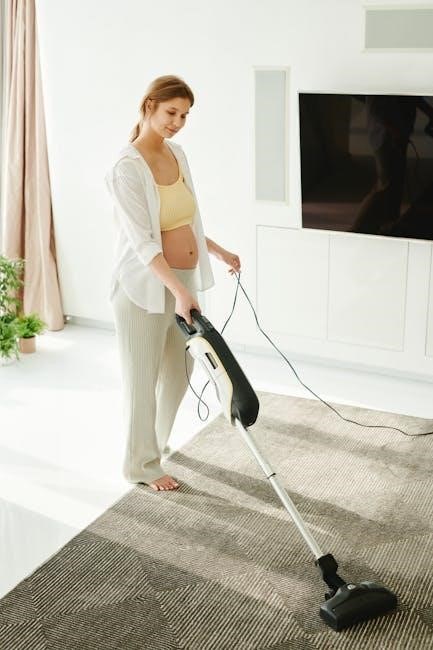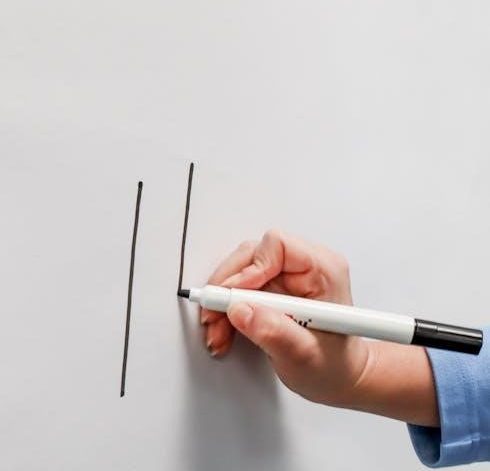Hoyer Lift Instruction Manual: A Comprehensive Guide
This comprehensive guide provides essential information for safely operating and maintaining your Hoyer lift․ It covers various aspects‚ from understanding lift components to performing proper maintenance․ Always prioritize safety by adhering to guidelines and instructions․
Hoyer lifts are assistive devices designed to safely transfer individuals with limited mobility․ They reduce strain on caregivers and ensure patient comfort․ Manual and electric models provide versatile solutions for various transfer needs․
Purpose and Benefits of Using Hoyer Lifts
Hoyer lifts serve the primary purpose of safely transferring individuals with mobility challenges between surfaces‚ such as beds‚ wheelchairs‚ and commodes․ These lifts significantly reduce the risk of injury for both the patient and the caregiver․ The ergonomic design minimizes physical strain‚ especially during frequent transfers․ Hoyer lifts enhance patient comfort and dignity throughout the transfer process․
Moreover‚ they promote independence and improve the overall quality of life for individuals requiring assistance․ By providing a secure and controlled lifting mechanism‚ Hoyer lifts enable smoother transitions‚ fostering a more positive and comfortable experience for everyone involved․

Types of Hoyer Lifts
Hoyer lifts come in various types‚ including manual‚ electric‚ and stand-up models‚ each designed to meet specific needs and preferences․ Understanding the features and operation of each type is crucial․
Manual Hoyer Lifts: Features and Operation
Manual Hoyer lifts are cost-effective and portable‚ featuring hydraulic assists to reduce caregiver strain during patient transfers․ They typically weigh less than powered lifts‚ making them easier to transport․ Operation involves a hand-operated hydraulic pump to raise and lower the patient․ The pump handle is often ergonomically designed for ease of use and can sometimes be operated from either side of the lift․ These lifts require physical effort from the caregiver but offer a reliable and controlled lifting experience․ Stability is ensured through features like non-sway cradles and adjustable bases to navigate various environments․
Electric Hoyer Lifts: Features and Operation
Electric Hoyer lifts offer powered assistance‚ reducing physical strain on caregivers during patient transfers․ These lifts utilize rechargeable battery packs and push-button hand controls for operation‚ providing smooth and effortless lifting․ Many models feature adjustable bases to navigate around furniture and tight spaces․ Electric lifts are particularly beneficial for heavier patients or situations requiring frequent transfers․ Some advanced models‚ like the HPL700‚ incorporate features such as a 6-point Bari loop spreader bar for enhanced safety․ Proper battery care and charging are crucial for optimal performance and longevity of the lift․
Stand-Up Hoyer Lifts: Features and Operation
Stand-up Hoyer lifts‚ also known as standing lifts‚ are designed to assist patients who have some weight-bearing ability to rise from a seated position․ They promote patient participation and can improve muscle strength and circulation․ These lifts typically feature a platform for the feet and supports for the knees and torso․ The operation involves securing the patient in the lift‚ then using the powered mechanism to raise them to a standing position․ Stand-up lifts are suitable for patients who need assistance with standing transfers but retain some mobility and strength․
Key Components of a Hoyer Lift
Understanding the key components of a Hoyer lift is crucial for safe and effective operation․ These components include the base‚ boom‚ lifting mechanism‚ and slings‚ each playing a vital role in patient transfer․
The Base and Its Adjustability
The base of a Hoyer lift provides stability and support during patient transfers․ Its adjustability is a key feature‚ allowing the lift to navigate various obstacles such as wheelchairs‚ toilets‚ and furniture․ A wider base provides enhanced stability‚ especially when lifting heavier patients․ Ensuring the base is properly adjusted before each lift is crucial for safety․ The base often features swivel casters for maneuverability‚ and some models have adjustable height․ Always check the base for any signs of damage or wear before use to prevent accidents․ Correct base adjustment promotes smooth and secure transfers․
The Boom and Lifting Mechanism
The boom is the extending arm of the Hoyer lift‚ responsible for raising and lowering the patient․ It houses the lifting mechanism‚ which can be either hydraulic or electric․ Manual lifts use a hydraulic pump‚ often operated by hand‚ while electric lifts utilize a motor․ The lifting mechanism must be in proper working order to ensure smooth and controlled movement․ The boom’s design provides the necessary leverage for lifting patients of varying weights‚ up to the lift’s specified capacity․ Regular inspection of the boom and lifting mechanism is essential to identify any potential issues and maintain safe operation․
Slings: Types‚ Materials‚ and Attachment Points
Slings are crucial for patient comfort and safety during transfers with Hoyer lifts․ Various sling types exist‚ including full-body‚ divided-leg‚ and stand-assist slings‚ each suited for specific needs․ Sling materials range from padded nylon to mesh‚ prioritizing comfort and hygiene․ Attachment points‚ typically loops or clips‚ connect the sling to the boom․ Correct sling selection and attachment are vital to prevent falls or injuries․ Always follow the manufacturer’s instructions for sling use and weight capacity․ Regularly inspect slings for wear and tear‚ replacing them when necessary to maintain safe lifting practices․ Proper sling care extends its lifespan․

Safety Precautions and Guidelines
Prioritize safety with Hoyer lifts by following these guidelines․ Always inspect the lift before use․ Adhere to weight limits․ Ensure proper sling attachment․ Be aware of emergency procedures‚ and never leave a patient unattended․
Weight Capacity and Safe Working Load
Understanding the weight capacity of your Hoyer lift is crucial for safe patient handling․ Exceeding the specified safe working load (SWL) can lead to equipment failure and potential injury for both the patient and caregiver․ Always consult the lift’s manual for the exact weight limit․ Never attempt to lift a patient whose weight exceeds this limit․ Regularly inspect the lift for any signs of stress or damage that could compromise its weight-bearing capabilities․ Utilizing a lift beyond its intended weight capacity poses significant safety risks and should be strictly avoided․ Ensure the sling is also rated for the patient’s weight․
Pre-Lift Checklist and Inspections
Before each use‚ a thorough pre-lift checklist and inspection are vital for ensuring safe patient transfers․ Verify that all components‚ including the base‚ boom‚ and sling‚ are in good working condition․ Check for any signs of damage‚ such as cracks‚ bends‚ or loose connections․ Ensure that the hydraulic system (if applicable) is functioning smoothly and that the battery (if electric) is fully charged․ Confirm the sling is correctly attached and appropriate for the patient’s size and weight․ Test the lift’s functionality by raising and lowering it without a patient․ Address any identified issues before proceeding with the lift to prevent accidents and injuries․
Emergency Procedures and Troubleshooting
Familiarize yourself with emergency procedures in case of lift malfunction during patient transfer․ In the event of a power outage with an electric lift‚ know how to manually lower the patient․ If the lift becomes unstable‚ immediately lower the patient to the nearest safe surface․ For hydraulic lift failures‚ understand the manual release mechanism․ Common issues include lift not raising‚ jerky movements‚ or unusual noises․ Consult the troubleshooting section of the manual for possible solutions‚ such as checking fluid levels or battery connections; If problems persist‚ discontinue use and contact a qualified technician for repair․ Prioritize patient safety in all emergency situations․

Operating a Hoyer Lift: Step-by-Step Guide
This guide details the correct procedure for using a Hoyer lift‚ ensuring safe and comfortable patient transfers․ Each step is crucial‚ from preparation to execution‚ for both patient and caregiver safety․
Preparing the Patient and the Lift
Before initiating any lifting procedure‚ ensure the patient is fully informed and comfortable․ Explain the process clearly‚ addressing any concerns they may have․ Verify the Hoyer lift’s weight capacity is suitable for the patient․ Inspect the lift for any signs of damage or wear‚ including the sling‚ base‚ and lifting mechanism․ Position the lift appropriately‚ ensuring easy access to the patient․ Gather all necessary equipment‚ such as the correct sling type․ Confirm the environment is clear of obstacles․ Ensure the patient is properly positioned and ready to be safely lifted․ Proper preparation minimizes risks and maximizes comfort․
Attaching the Sling Correctly
Attaching the sling correctly is crucial for patient safety and comfort during a Hoyer lift transfer․ Always refer to the sling manufacturer’s instructions for specific guidance․ Ensure the sling is the appropriate size and type for the patient and the intended transfer․ Position the sling according to the recommended method‚ supporting the patient’s body securely․ Double-check all straps and attachment points to ensure they are properly connected to the lift’s cradle or spreader bar․ Verify the sling is not twisted or damaged before lifting․ A properly attached sling distributes weight evenly‚ preventing injury and promoting a secure transfer․ Prioritize accuracy and care․
Performing the Lift and Transfer
Once the sling is securely attached‚ carefully begin the lifting process․ Communicate clearly with the patient throughout the entire transfer․ Gradually raise the patient‚ ensuring their comfort and stability․ Avoid sudden movements or jerking motions․ Guide the patient smoothly towards the destination surface‚ such as a wheelchair or bed․ Ensure the receiving surface is stable and ready before initiating the transfer․ Gently lower the patient onto the surface‚ maintaining support until they are safely positioned․ Detach the sling carefully‚ ensuring no strain or discomfort․ Always prioritize patient well-being and use proper body mechanics to prevent injury to yourself․ Monitor throughout transfer․

Maintenance and Care
Proper maintenance ensures the longevity and safe operation of your Hoyer lift․ Regular cleaning‚ hydraulic system checks (for manual lifts)‚ and battery care (for electric models) are crucial․ Follow guidelines․
Cleaning and Disinfection Procedures
Maintaining a clean Hoyer lift is crucial for preventing infection and ensuring patient safety․ Regularly clean all surfaces with a mild detergent and water solution․ Pay close attention to areas that come into direct contact with the patient‚ such as the sling and boom․ Disinfect the lift after each use‚ especially in healthcare settings‚ using an appropriate disinfectant solution․ Ensure that the disinfectant is compatible with the lift’s materials to prevent damage․ Allow sufficient contact time for the disinfectant to be effective․ Rinse thoroughly with water and dry completely before the next use․ Regularly inspect for wear․
Hydraulic System Maintenance (for Manual Lifts)
Proper maintenance of the hydraulic system is essential for ensuring the smooth and reliable operation of manual Hoyer lifts․ Regularly inspect the hydraulic cylinder for any signs of leaks or damage․ If leaks are detected‚ consult a qualified technician for repair․ Periodically check the hydraulic fluid level and replenish as needed‚ using the recommended type of fluid specified in the manufacturer’s manual․ Ensure that the pump handle operates smoothly and without excessive resistance․ Lubricate all moving parts of the hydraulic system as instructed in the manual․ Store the lift in a dry environment to prevent corrosion․
Battery Care and Charging (for Electric Lifts)
Maintaining the battery of your electric Hoyer lift is crucial for optimal performance and longevity․ Always follow the manufacturer’s charging instructions․ Fully charge the battery before its first use and after each subsequent use to maximize its lifespan․ Avoid deep discharging the battery‚ as this can damage it․ Use only the specified charger provided with the lift․ Do not leave the battery on the charger for extended periods after it is fully charged․ Store the lift in a cool‚ dry place when not in use․ Regularly inspect the battery terminals for corrosion and clean them as needed․




